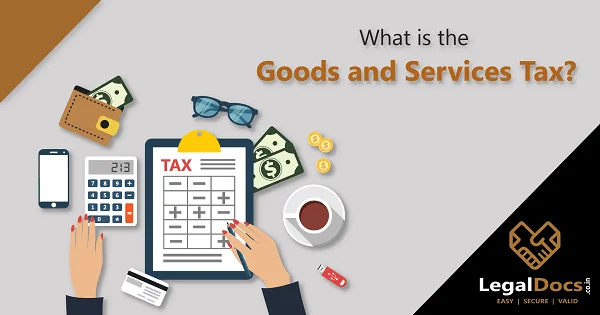What is GST?
What is GST - Goods and Services Tax
The Goods and Services Tax Act, 2017 passed in the Parliament led to the imposition of Goods and Services Tax (GST) in India. It is an indirect tax or consumption-based tax levied on the supply of goods and services. It is levied at every step in the production process but is refunded to all parties in the chain of production. The final burden of tax lies on the final consumer. Multiple taxes that once existed and were levied by Central and State government, including; central excise duty, service tax, additional customs duty, surcharges, state-level value-added tax, and octroi, were replaced by GST.
GST law in India is comprehensive, multi-stage, destination-based tax that is levied on every value addition. The tax rates, rules and regulations are governed by the GST council with the idea of one nation, one tax. The council comprises of finance ministers of the centre and the state. This means that the taxation is now governed by both Union and State governments through Central GST and State GST. The Central GST (CGST) by the Central government and the State GST (SGST) by the state government is levied on the transactions made within a single state. In case of inter-state transactions and imported goods and services Integrated GST (IGST) is levied by the Central Government. However, this complicates the tax collection process for the state governments as they are now disabled to collect the taxes that they earlier owed from the Central government. To determine whether CGST, SGST, & IGST are applicable, one should first know if the transaction is;
Inter-state: when the location of the supplier is same as the location of the buyer i.e. same states.
Intra-state: when the location of supplier and the location of the buyer are in different states.
The split has been made keeping in mind the federal structure of the country where both Centre and States have been assigned powers by the Constitution to levy and collect the tax. Both have distinct responsibilities to perform, for which they need to raise tax revenue. Such a structure of tax helps the taxpayers take a credit against each other.
Different Types of GST:
GST has supplanted numerous Indirect Taxes in India. The Goods and Services Tax Act was passed in the Parliament on 29th March 2017. The Act came into existence on 1st July 2017.
As well as GST tax is differentiated in 4 types which are mentioned below:
SGST (State Goods and Services Tax)
SGST implies State Goods and Services Tax, one of the four classifications under Goods and Services Tax (CGST, IGST, and SGST) with an idea of one tax in one country. SGST falls under State Goods and Services Tax Act 2016. The current state taxes of State Sales Tax, Luxury Tax, Entertainment tax (unless it is levied by the local bodies), VAT, Taxes on the lottery, betting and gambling, Entry tax not in lieu of Octroi, State Cesses are subsumed in SGST tax. It is against CGST and IGST.
CGST (Central Goods and Services Tax)
CGST is a Central Goods and administrations tax. It is liable on providers managing inside the state. Expenses which are gathered will be shared with the focal expert body.
This infers that both the Central and the State governments will concede to consolidating their levies with a suitable extent for income sharing between them. It is specified in Section 8 of the GST Act that the charges are imposed on all Intra-State supplies of products or potential benefits yet the rate of expense will not be surpassing 14 percent, each.
IGST (Integrated Goods and Service Tax)
IGST (Integrated Goods and Services Tax), one of the three categories under Goods and Services Tax (CGST, IGST, and SGST) with a concept of one tax one nation. IGST falls under Integrated Goods and Services Tax Act 2016.
IGST is charged when movement of goods and service is done with one state then onto the next. If goods are moved from Tamil Nadu to Kerala, IGST is collected on such products. The income out of IGST is shared by the state government and local government according to the rates settled by the specialists.
UTGST (Union Territory Goods and Services Tax)
UTGST is known as Union Territory Goods and Services Tax. The Union Territory GST is applied to union territories of India namely Chandigarh, Lakshadweep, Daman and Diu, Dadra and Nagar Haveli, Andaman and Nicobar Islands
Why is GST needed in India?
GST is tax considered as a change in the taxation method. There are various central and state taxes which are now integrated into a single tax named as GST which can lead to a common national market.
VAT rates differ from state to state, but GST makes it uniform and remains constant all over. Here, the tax would be partitioned between the Central and State government. Let us have a gist at the impact of GST in several sectors.
Impact of GST on Indian Economy
GST helps to create a common national market in India, which also helps to boost foreign investment.
GST leads the foreign investors to invest with “Make in India†campaign.
As India is a developing nation with a huge amount of population, leads to lack of employment. Therefore GST will help to reduce poverty and generate more employment.
SGST (States Goods and Services Tax) and IGST (Integrated Goods and Services Tax) helps to reduce incentive from tax.
Impact of GST on Traders
Multiple taxes are integrated into one tax.
It helps to reduce the cascading effect to pay tax on each stage.
Neutralization of tax for exports.
Simple tax.
There is no more difference between goods and services.
Development of common national market.
Impact of GST on Consumers
Simple taxation system.
Reduction in the price of goods and services.
Transparency in the taxation system.
Tax is uniform all over the country.
Employment opportunities have increased.
Key features of GST in India:
Multi-stage: An item goes through multiple changes of hands till it reaches the end consumer. The process usually followed is; buying raw materials, manufacture, sale to the wholesaler, sale to the retailer, and then it finally reaches the end consumer. GST will be levied on each of these stages. Thus, it becomes a multi-stage tax.
Value Addition: The manufacturer who makes the product buys raw materials. The value of raw materials increases as they are processed. The manufacturer then sells to the wholesaler or warehousing agent who packs and labels the product. This is another value-addition that the wholesaler puts in order to sell it to the retailer. The retailer further packages the product in smaller quantities and may choose to market the product for better sales. At each stage, monetary worth is added to the product and GST Registration will be levied on all these value additions.
Destination-based: Since the tax burden falls on the consumer, GST filing is a consumption based tax levied at the point of consumption. This means if goods are manufactured in a state and sold in another, the tax revenue reaches the state where the goods are consumed and not where they are manufactured.
Benefits of GST:
Advantages of GST
Disadvantages of GST
In the earlier tax regime, the tax liability was passed on at every stage of the transaction. This means the taxes levied on each stage would increase the value of the item (in terms of the price). Therefore, the final liability that rests on the consumer in terms of the price paid for a good or a service would be higher. The scenario is different in case of GST. There is a way to claim credit for tax paid in acquiring input. This means an individual who has paid taxes can claim for tax when after he submits the tax. Therefore, every time one claims an input tax credit, the sale price is reduced.
The recent introduction of the E-way bills for inter-state movement of goods has allowed the movement of goods in a staggered manner. All the stakeholders in the process of moving goods from one place to another within a state; manufacturers, traders, and transporter are benefitted. The tax authorities are also in vantage as this has reduced the time check posts and tax evasion. However, since it is a completely new tax system, it creates a confusion in the minds of taxpayers who may end up paying the wrong type of GST or wrong amount of GST. One should not hesitate to take assistance for the same.
GST Explained with Help of an Example
Let us have a look where and how the GST tax is segregated:
Manufacturers
When a manufacturer of a particular apparatus or product buys raw materials, such as a pant manufacturer needs a zip, cloth, buttons and various other equipment to make a pant and these raw material costs rupees 500. This 500 rupee includes 10 percent of tax as per GST rules which will be rupees 50.
As soon as the product is made, the manufacturer has to include his value in the product which can be assumed as rupees 40. Then the total cost of the product will be 540 (500 + 40). And when we count 10 percent tax which is 54 rupees. Now, the manufacturer has already paid rupees 40 while purchasing the raw materials, so now the tax will be Rs 14 (Rs 54 - Rs 40).
Wholesaler
The wholesaler will purchase the product at rupees 540 and find some profit margin in it. For that, he would assume a specific amount which is rupees 30. So, now the total cost of the clothing becomes rupees 570. When we apply the same 10 percent principle, the tax amount will be 57.
With this rupees 57, rupees 54 have already been paid by the manufacturer. Therefore the in all tax paid by the wholesaler is 3 rupees. (Rs 57 - Rs 54)
Retailer
The last stage is when the retailer buys the shirt at rupees 570. He will also look after keeping some profit on the product. If we assume that he had set the margin of rupees 10. Then the total price of the product is 580 rupees (Rs 570 +Rs 10). After a 10 percent tax on the product, the levied tax is 58 rupees. Here Rupees 57 is already given by the manufacturer and the wholesaler, the retailer has to pay only rupees 1 (Rs 58 - Rs 57). The entire tax from manufacturer to wholesaler to retailer the tax is segregated as (40 + 14 + 3 + 1).
Are you looking for GST Registration in India?
Legaldocs will guide you in getting all necessary Documents and Registration required to get GST Registration in India, Please click on the following link to connect with our consultants.
Apply for GST RegistrationFAQs
What is GST registration?
Who can register for GST?
1. Individuals registered under the Pre-GST law (i.e., Excise, VAT, Service Tax etc.)
2. Taxable person who supplies goods and the annual turnover of his business is above 40 lakhs and the one who supplies services with annual turnover of rupees 20 lakhs.
3. Casual taxable person / Non-Resident taxable person.
4. Agents of a supplier & Input service distributor.
5. Those paying tax under the reverse charge mechanism.
6. Person who supplies via e-commerce aggregator.
7. Every e-commerce aggregator.
How long does it take to get GST number?
How to register for GST?
1. Login to LegalDocs website.
2. Draft the documents.
3. Make the Online Payment.
4. Upload the required documents.
5. Generate ARN.
6. You will receive the GST number on your Email id.
How to apply for GST number?
1. Contact details.
2. Email address.
3. PAN (Permanent Account Number).
4. Draft all the documents.
5. Make online payment.
6. Upload the documents.
7. Generate ARN.
How much does a GST registration cost?
What is GST (Goods & Service Tax)?
What is the concept of a destination-based tax on consumption?
Which of the existing taxes are proposed to be subsumed under GST?
a. Central Excise duty
b. Duties of Excise (Medicinal and Toilet Preparations)
c. Additional Duties of Excise (Goods of Special Importance)
d. Additional Duties of Excise (Textiles and Textile Products)
e. Additional Duties of Customs (commonly known as CVD)
f. Special Additional Duty of Customs (SAD)
g. Service Tax
h. Central Surcharges and Cesses so far as they relate to supply of goods and services.
B) State taxes that would be subsumed under the GST are:
a. State VAT
b. Central Sales Tax
c. Luxury Tax
d. Entry Tax (all forms)
e. Entertainment and Amusement Tax (except when levied by the local bodies)
f. Taxes on advertisements
g. Purchase Tax
h. Taxes on lotteries, betting and gambling
i. State Surcharges and Cesses so far as they relate to supply of goods and services
What is the status of Tobacco products after GST?
What type of GST is proposed?
Which authority will levy and administer GST?
What is IGST?
Who will decide rates for levy of GST?
How will imports be taxed under GST?
How will exports be treated under GST?
When did GST come into effect?
Will B2B transactions be subjected to GST?
What is an Input Tax Credit?
How can Input Tax Credits be applied?
CGST input tax credits can only be used to pay CGST and IGST
SGST input tax credits can only be used to pay SGST and IGST
IGST input tax credits can be used to pay CGST, SGST, and IGST
How and when should the returns be filed?
Can we claim GST interest refund after two years of payment?
How does GST apply to business?
Is PAN required to apply for GST?
Is there any specific time period for GST registration?
Who is a Casual Taxable Person?
Who are exempted from GST registration?
Any specialized agency of UNO (United Nations Organisation) or any multilateral financial institution and organization notified under the United Nations Act, 1947 Consulate or Embassy of foreign countries
Any other person notified by the Board/Commissioner
The Central Government or State Government may be based on the recommendation of the GST Council, notify exemption from registration to specific persons.
Is there any provision in GST for the tax treatment of goods returned by the recipient?
Are all goods and services taxable under GST?
What is meant by Reverse Charge?
What is the registration process for GST in India?
Application Drafting
ARN Number
Registered GST Number
 Knowledge Center
Knowledge Center





.webp)




















LEAVE A REPLY: